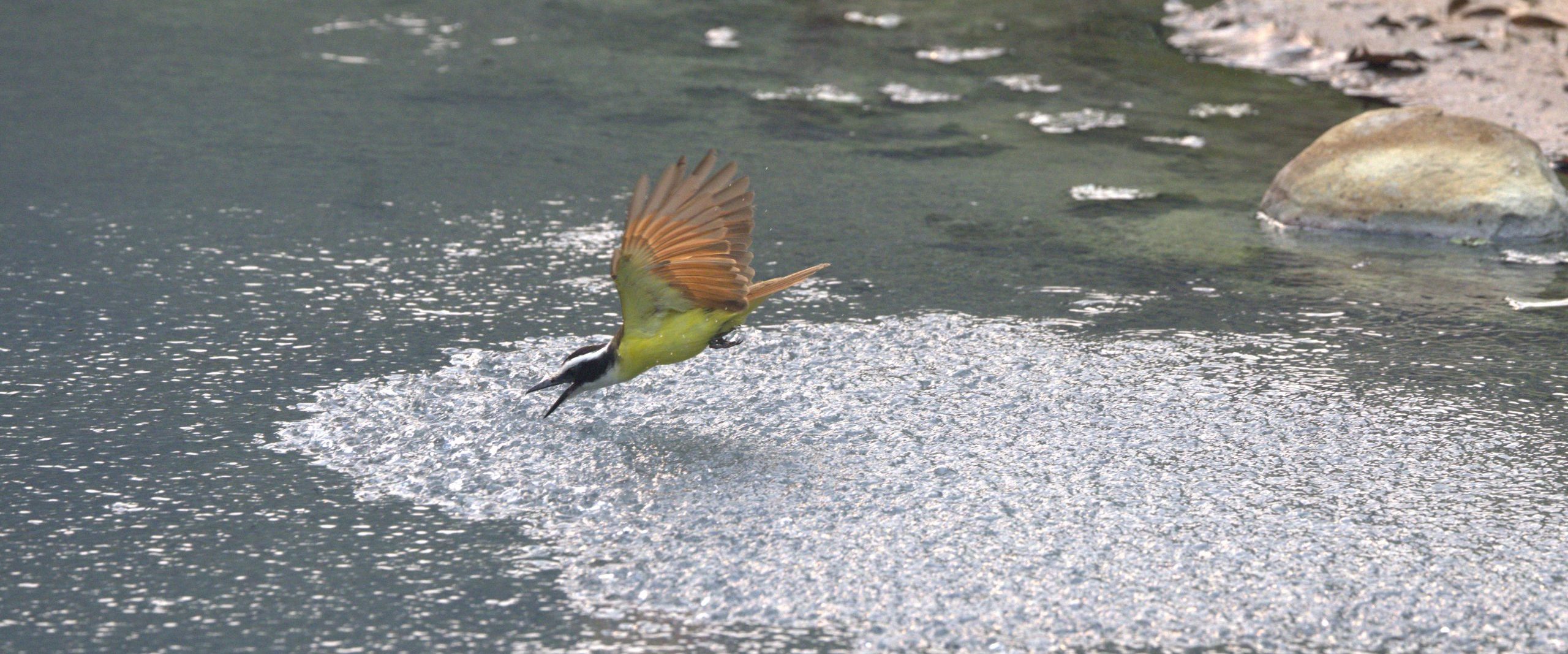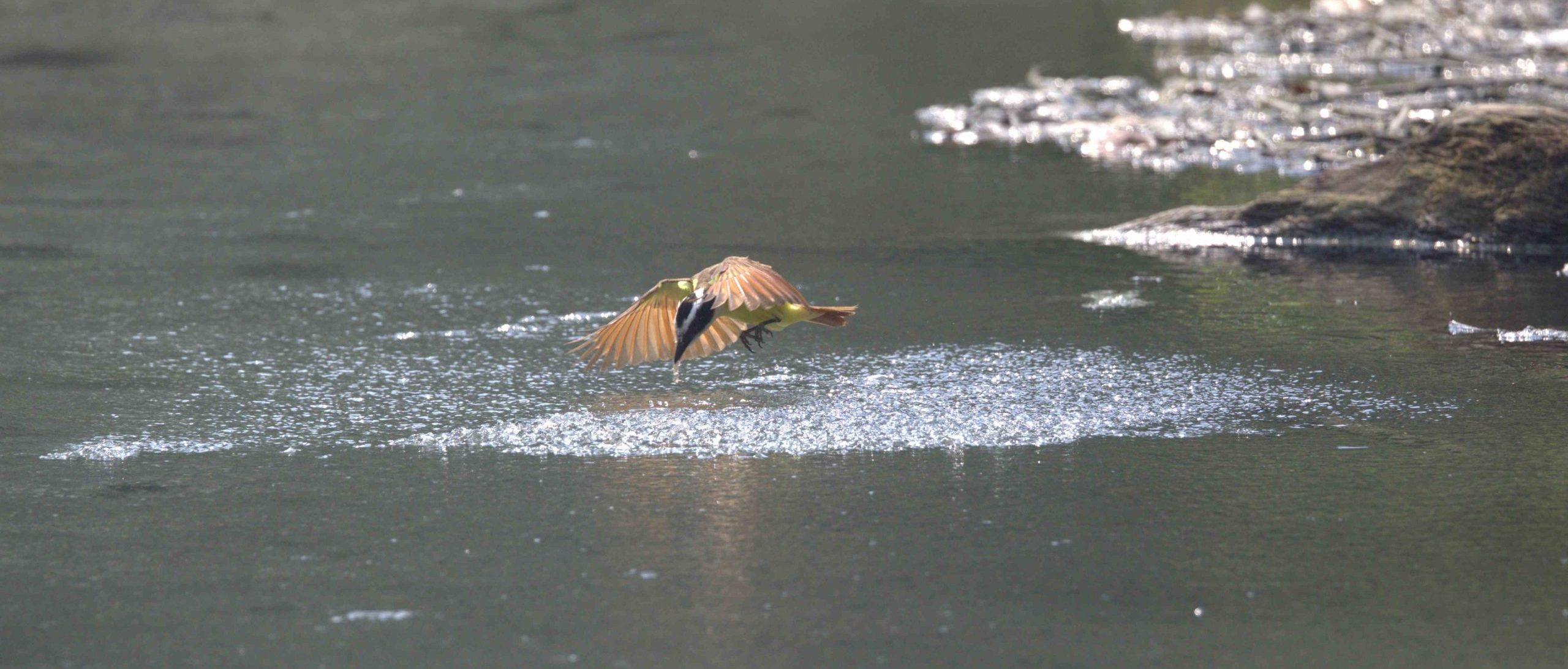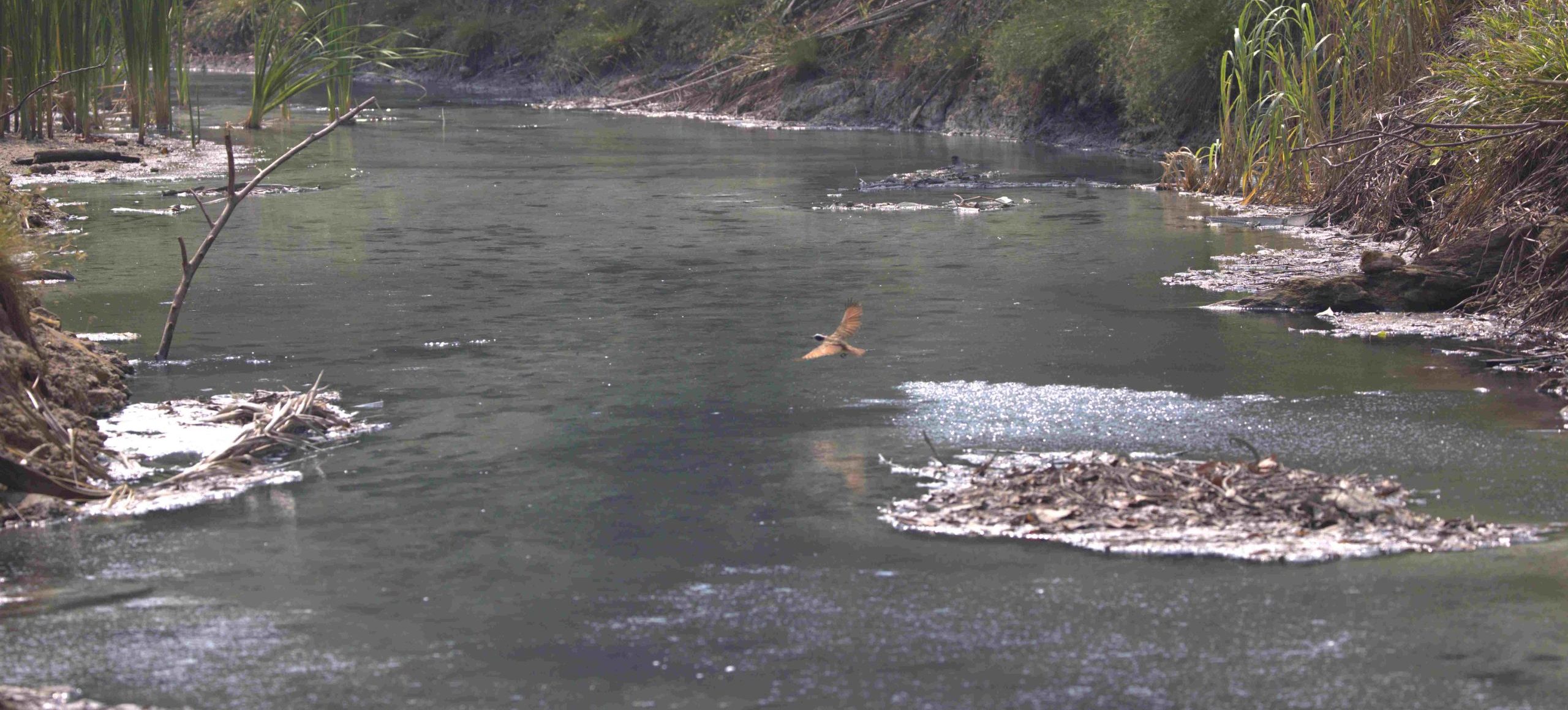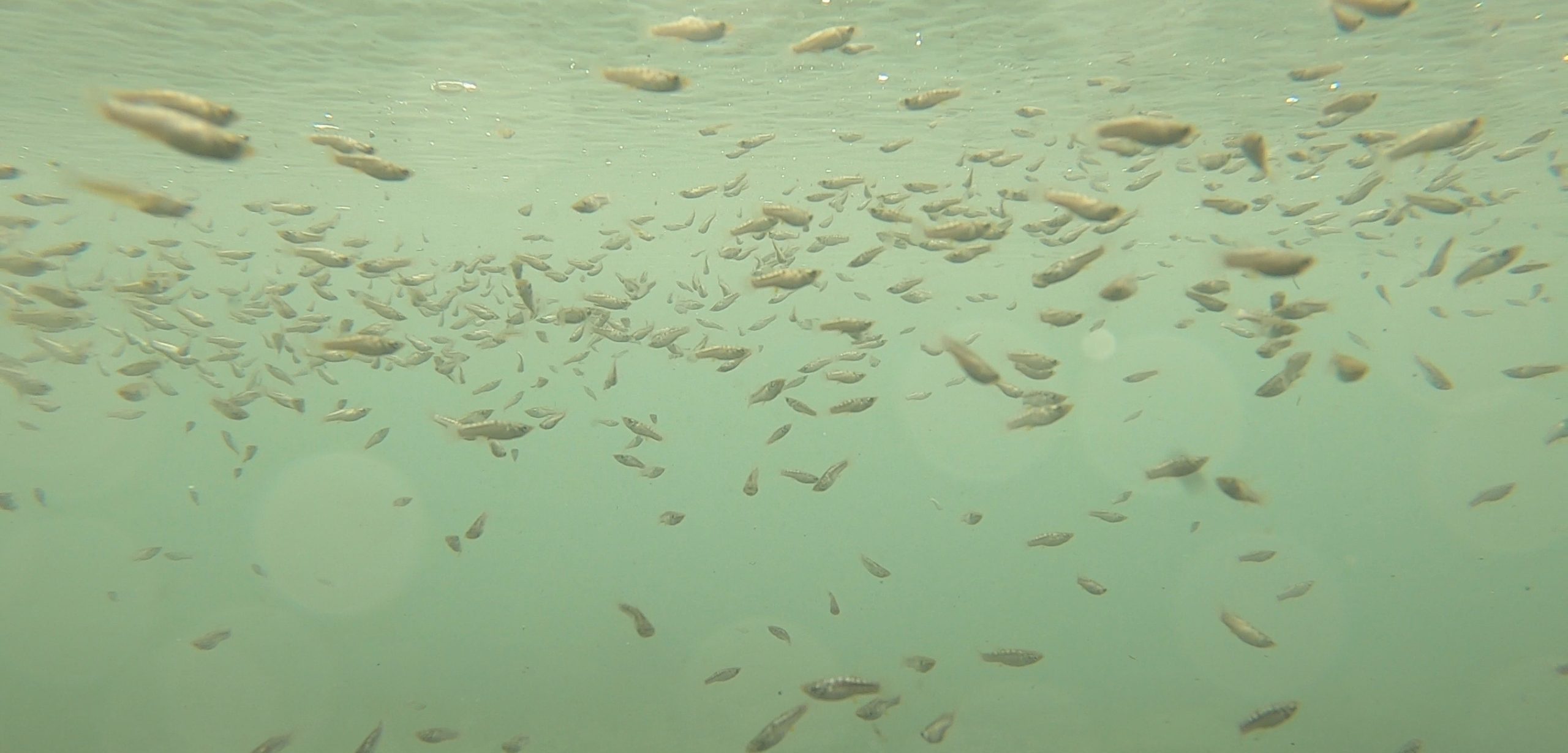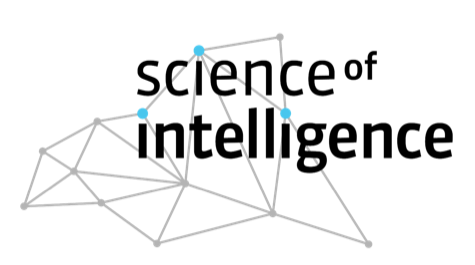Discerning danger, collectively
The challenge for a single fish is obvious: in order to never miss a predator, you might end up diving for every passing shadow. But groups have options. In theory, they can combine information from multiple individuals to detect real threats more reliably. Still, whether such collective cognition works in the chaos of the wild has remained unclear—until now.
In over two hundred documented events, the researchers compared responses to real predator attacks and harmless bird flybys. They focused on one particularly sneaky predator: the great kiskadee. Unlike splashy kingfisher dives, kiskadees perform near-silent overflight attacks where only their beak skims the water, visually similar to harmless disturbances like rustling branches or other bird movements.
The results were striking: larger shoals were much better at telling the difference between these ambiguous attacks and false alarms. Their responses to true threats increased with shoal size, while responses to harmless flybys stayed constant. That means bigger shoals did not just become more sensitive, but more discerning. An essential improvement in decision quality.
Smarter groups, not just bigger ones
In detection theory, decision-making often involves a trade-off: act fast, and you might make more mistakes. Wait longer, and you risk missing your chance. But the fish shoals in this study didn’t just get more accurate, they also got faster. Larger groups took less time between the first sign of a disturbance and the collective choice to continue evasive action.
This ability to break two fundamental trade-offs between true and false positives, and between speed and accuracy is what sets these findings apart. “In the biggest shoals, detection rates were nearly perfect—almost 100% of kiskadee attacks were identified correctly,” says Korbinian. “That level of performance would be impossible for a single fish.”
From molly shoals to human crowds
While previous models have explained group decision-making using ideas like quorum rules, where individuals only act once a threshold number of neighbours do, the sheer scale of these shoals (tens to hundreds of thousands of individuals) makes such explanations harder to apply. It’s unlikely that every fish is watching every other one. Instead, the researchers suspect a more complex, self-organized process might be at play. “We’re starting to think of these fish shoals like neural networks,” says Korbinian. “They might operate at something called criticality: a state that optimizes information flow in large systems, from brains to crowds.”
Understanding how large animal collectives process information so effectively could inspire future models in both biology and artificial intelligence. It also helps answer a core evolutionary question: Why do animals live in groups in the first place?
